Conclusion
Here are all three drills we discussed in this article.
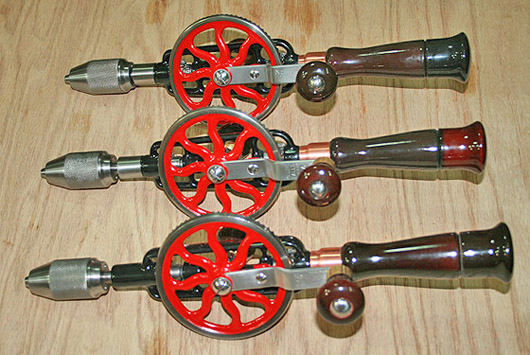
From the top of the picture: No. 2 - 1938, No. 2A -Transitional,
No. 2A - ZAMAK
Another view...
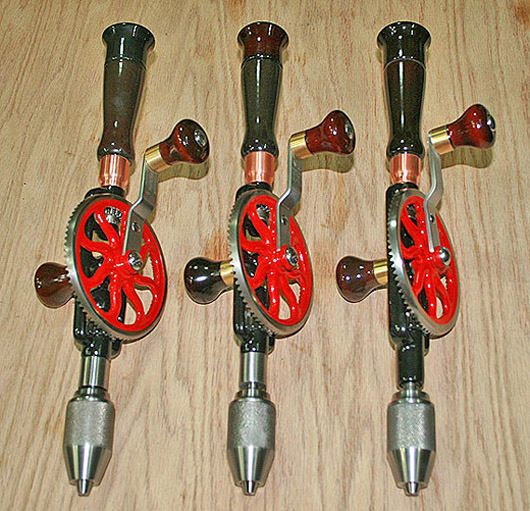
Below is a view of No. 2 - 1938 and No. 2A - Transitional.
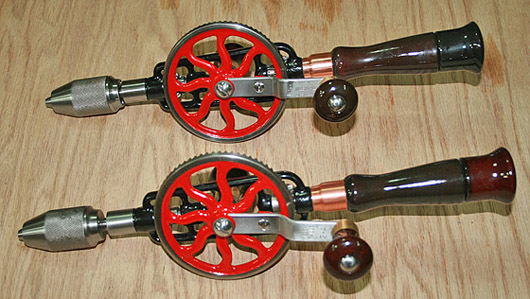
Next is a view of No. 2A - Transitional and No. 2A - ZAMAK.
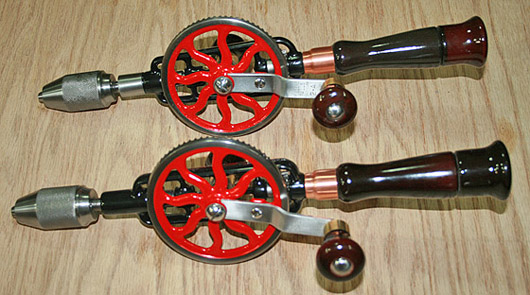
... and this is a "bad boy" - No. 2A - Transitional
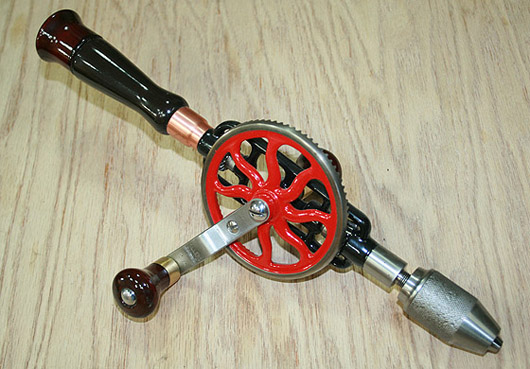
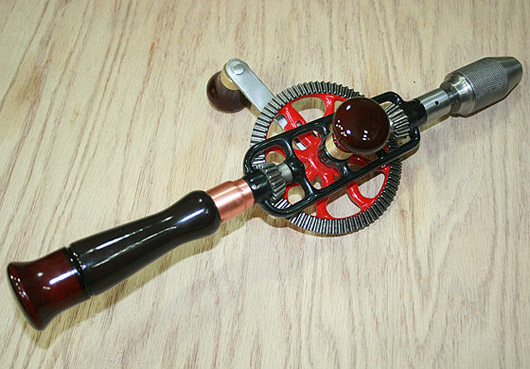
I don't have much more to say... If you ask the question (I hear
it often); which one is the best, I have to say that I don't
really know. You, the reader will have to make a judgment
call... ;-)
I am interested in your comments -
info@wkFineTools.com
Note:
-
After publication of this article I received a note from
Scott Grandstaff clarifying some issue of casting
methods and pointing to some mistakes on my part.
Hence, the casting issues of the transitional frame
described on page 3 are edited. Thank you Scott! The question
remains on differences between casting of frames for
No.2-1938 and improved casting of No.2-Transitional
frames. How was this improvement achieved?
-
Another reader pointed me to the
study by George Langford in which George mentioned
the existence of two different metal frames for No.2A
drill. Indeed, the description of the No.2 Type A
in George's study indicates that. Thank you George!
However, George suggests that ZAMAK castings made by
Millers falls "to their everlasting credit, none of
these die-cast frames has fallen into pieces. I haven't
found any broken frames made either from malleable iron
or this pot metal."
My experience, described in
the above articles, is different. A dozen or so
broken frames are here and can't be ignored.
Wiktor Kuc
February, 2014